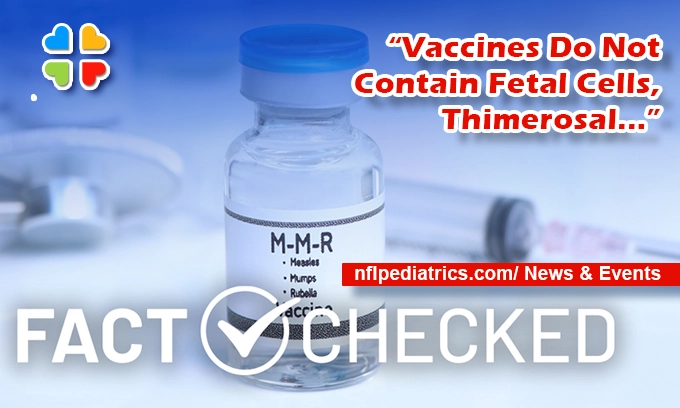The Claim in Context
Misinformation about fetal cells, thimerosal, mercury, and aluminum salts is frequently cited as a reason not to get vaccinated. Some of these, such as fetal cells and thimerosal, are not present in routine childhood vaccines. Others, like aluminum salts, may be included in very small amounts that have been thoroughly studied and shown to be safe.
Key Facts
- Each ingredient in a vaccine has a specific function, making the vaccine safer or work better.
- All vaccine ingredients undergo rigorous scientific testing to make sure they are safe in the amounts used in vaccines.
- The number of additives in vaccines is very small. In fact, people are exposed to much higher levels of these ingredients in their everyday lives.
- ALUMINUM: Small amounts of aluminum salts are used in some vaccines to increase the body’s immune response, meaning lesser quantities of the vaccine and fewer doses are needed. Aluminum salts are found naturally in soil, water and foods such as soy. Extensive clinical trials have been conducted and have found no significant risk associated with the tiny amounts of aluminum salts in vaccines.
- THIMEROSAL: Since 2001, thimerosal has been removed from all routine childhood vaccinations in the U.S. Some influenza vaccines still contain thimerosal, a preservative that contains ethylmercury. Several valid scientific studies have shown there is no link between thimerosal and neurodevelopmental disorders, including autism.
- FETAL CELLS: Vaccines do not contain fetal cells. Some vaccines involve growing viruses in human cell cultures originally developed from two aborted fetuses in the 1960s. These cell lines are still going, so no new aborted fetuses are ever needed. Purification processes filter the vaccine during production, and no fetal tissue remains.
Evidence Snapshot
The United States has set up a national system to track vaccine safety; it’s one of the most advanced in the world. Vaccines and their ingredients are thoroughly tested before being licensed by the Food and Drug Administration and recommended by the Centers for Disease Control and Prevention. Each batch of vaccines is also tested for safety and quality, and several different agencies and programs continuously monitor the vaccines over time. Vaccines have been given safely to millions of people over the past 50 years.
Why It Matters
Parents should have accurate information about vaccines so they can make good decisions for their child’s health. A child who is not vaccinated is at risk of catching a disease that is dangerous or even deadly. Some of the worst diseases, like polio, measles and Hib meningitis, have been greatly reduced or eliminated thanks to vaccines.
Source: www.aap.org


